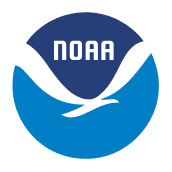2021 NOAA Research Outstanding Publication Award
 Improvements to Lake-Effect Snow Forecasts Using a One-Way Air–Lake Model Coupling Approach – Journal of Hydrometeorology
Improvements to Lake-Effect Snow Forecasts Using a One-Way Air–Lake Model Coupling Approach – Journal of Hydrometeorology
GSL scientists are co-authors on a publication that has been awarded the 2021 NOAA Research Outstanding Publication – Weather. “Improvements to Lake-Effect Snow Forecasts Using a ONe-Way Air-Lake Model Coupling Approach” was published in the Journal of Hydrometeorology by Ayumi Fujisaki-Manome (CIGLAR/U of Mich), Greg E. Mann (NWS Detroit), Eric J. Anderson (GLERL), Philip Y. Chu (GLERL), Lindsay E. Fitzpatrick (CIGLAR), Stanley G. Benjamin (GSL), Eric P. James (CIRES/GSL), Tatiana G. Smirnova (CIRES/GSL), Curtis R. Alexander (GSL), and David M. Wright (U of Michigan).
Lake-effect convective snowstorms frequently produce high-impact, hazardous winter weather conditions downwind of the North American Great Lakes. During lake-effect snow events, lake surfaces can cool rapidly, and in some cases, develop significant ice cover. Existing operational weather forecast models, such as the National Oceanic and Atmospheric Administration’s (NOAA) High-Resolution Rapid Refresh (HRRR) model, don’t account for such rapid changes in lake-surface conditions, resulting in reduced performance of lake-effect snow forecasts.
As a milestone to future implementations in the Great Lakes Operational Forecast System (GLOFS) and HRRR, this study examines the one-way linkage between a hydrodynamic-ice model, and an atmospheric model. The realistic representation of lake-surface cooling and ice development or its fractional coverage during three lake-effect snow events was achieved by feeding the FVCOM-CICE simulated lake-surface conditions to WRF (using a regional configuration of HRRR). Results were an improved simulation of the turbulent heat fluxes over the lakes and resulting snow water equivalent in the downwind areas.
This study shows that the one-way coupling is well suited to the operational environment, as it requires little to no increase in computational resources yet can result in improved forecasts of regional weather and lake conditions.
Our Mission
Lead research and directed development through the transition of environmental data, models, products, tools, and services to support commerce, protect life and property, and promote a scientifically literate public.
Research Areas
Organizational Excellence, Earth System Prediction, Advanced Technologies, and Decision Support are the foundation to achieving the GSL Grand Challenge: Deliver actionable global storm-scale prediction and environmental information through advanced technologies to serve society.
Global Systems Laboratory

